As you walk along Lake Tamblyn sit down at the far end of the wall and look at the colourful lichens here (Fig. 5-1). The grey marbling in the concrete is likely due to to a difficult to identify microlichen living right in the surface of the concrete. But there are the more conspicuous orange lichens (Xanthoria elegans - now called Rusavskia elegans, Fig. 5-2, 5-3 and 5-4) and the less obvious yellow dots of Caloplaca flavovirescens (Fig. 5-5).
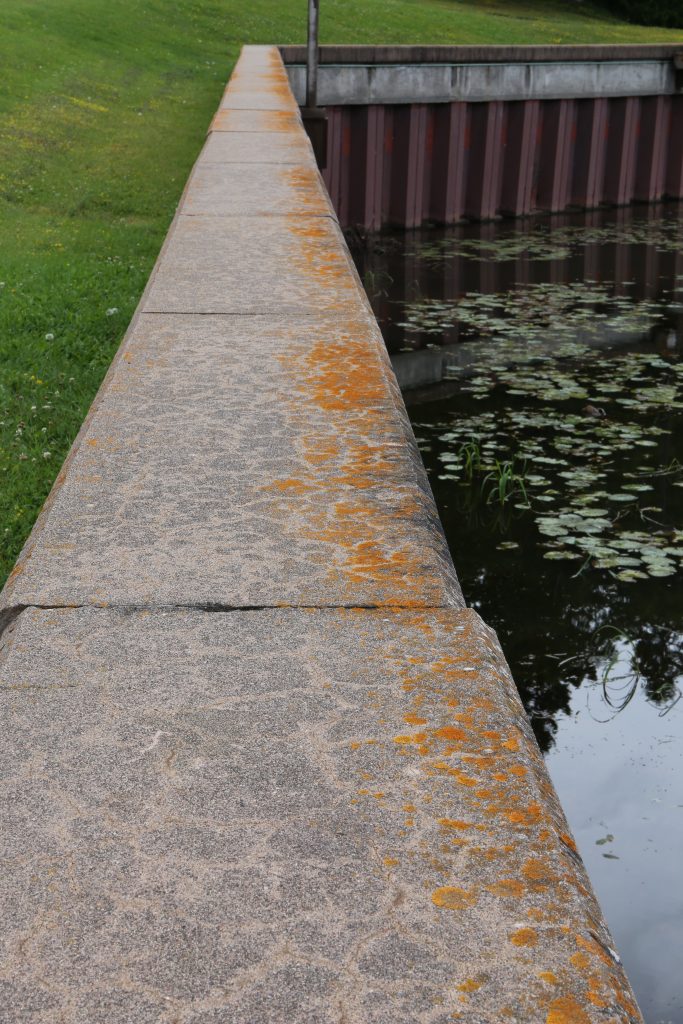
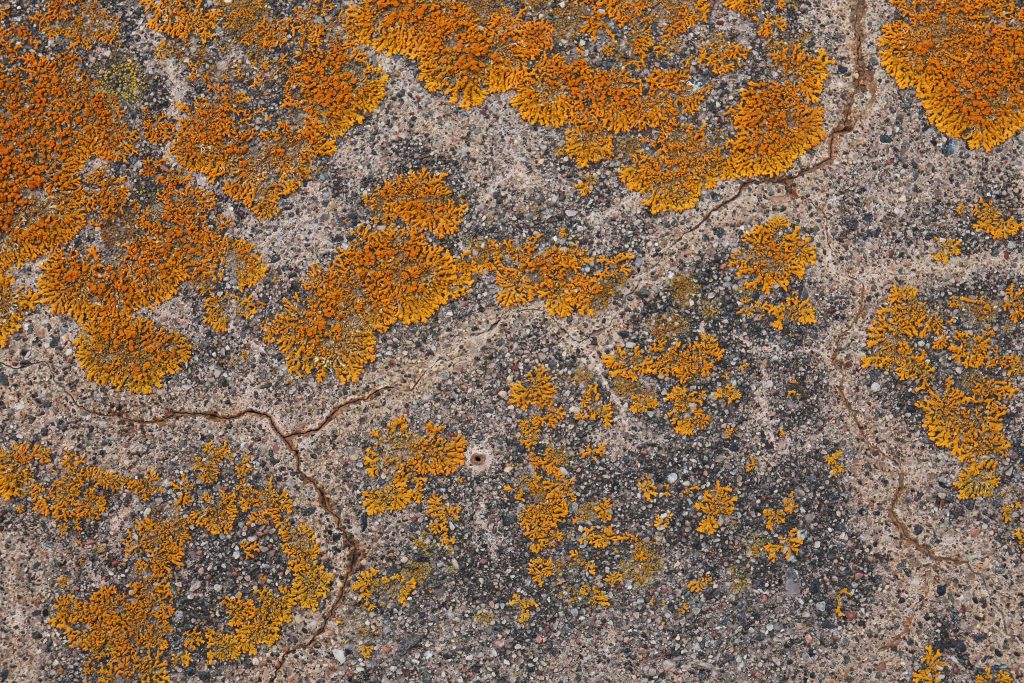
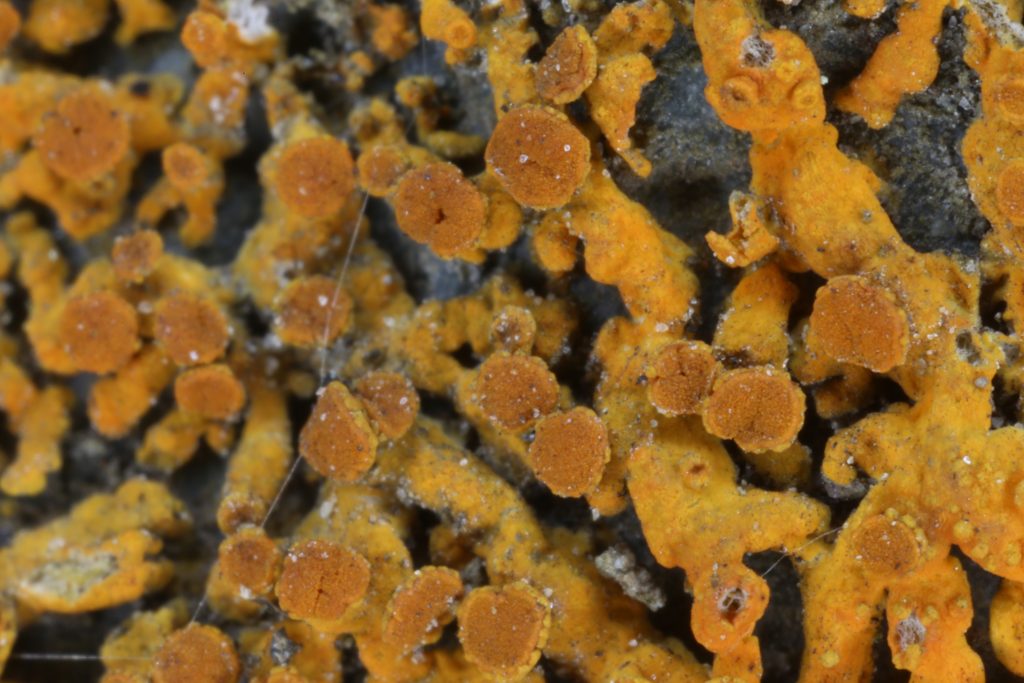
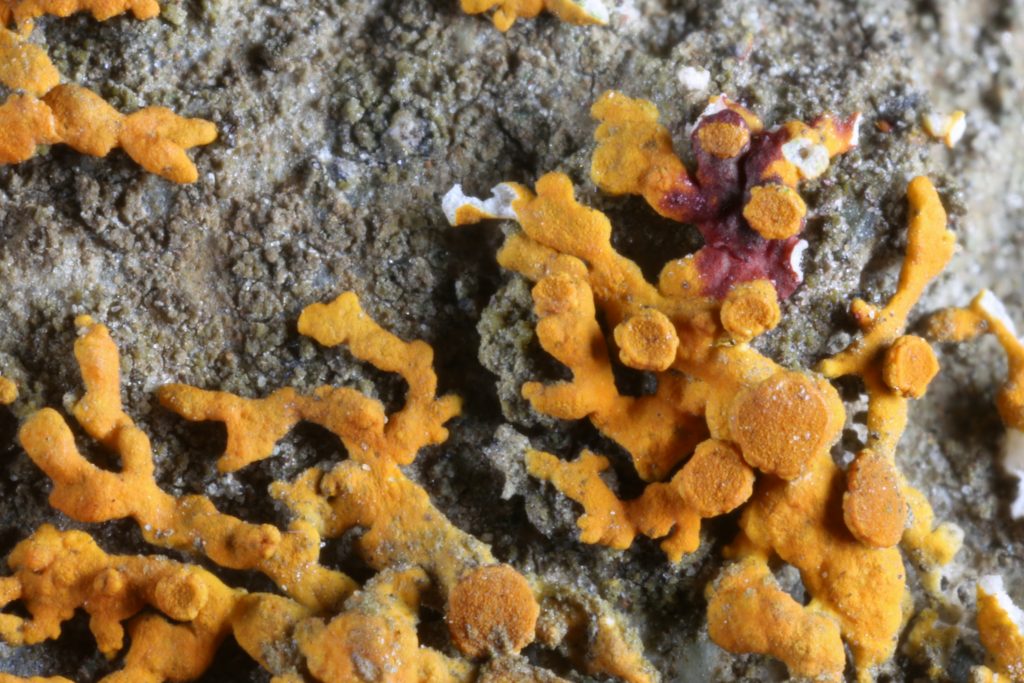
Lichenologists often resort to chemical methods of identifying lichens - Rusavskia elegans contains a specific chemical which reacts with alkali to produce bright purple. Thin layer chromatography which separates lichen coloured substances may need to be used for identification of other lichens.
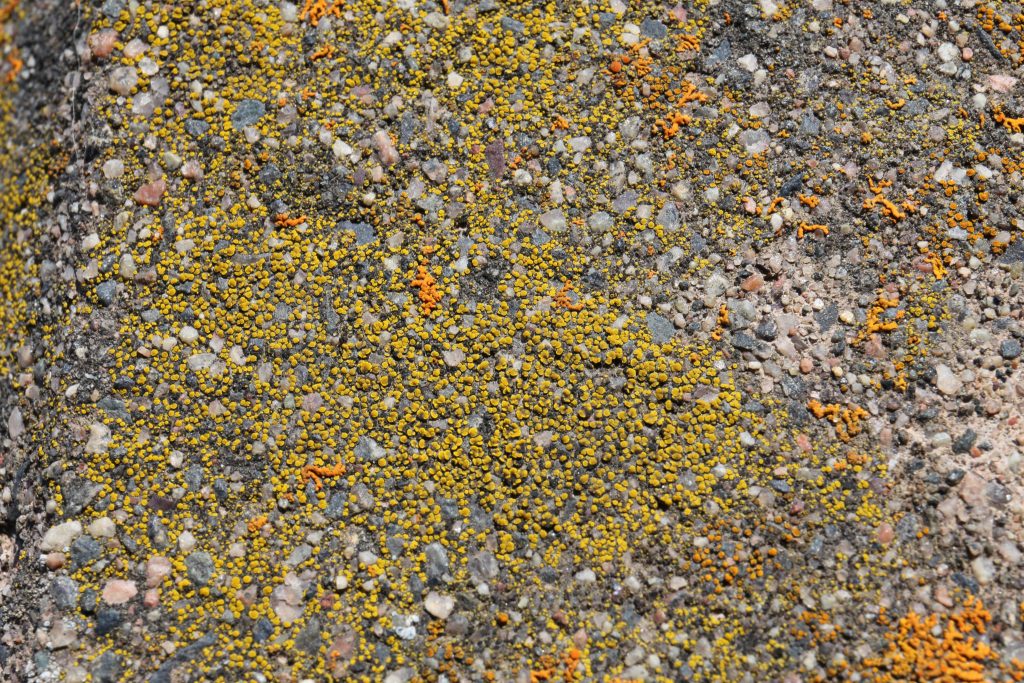
Proceed across the Lake Tamblyn dam and fish ladder (designed to allow lake trout to get past this obstacle during annual spawning run). You will now be passing through native boreal vegetation dominated by white spruce (Picea glauca) and paper birch (Betula papyrifera) until you reach the spillway dam (Fig. 5-6) made of coarser concrete, but still dominated by the lime loving orange species you already identified.
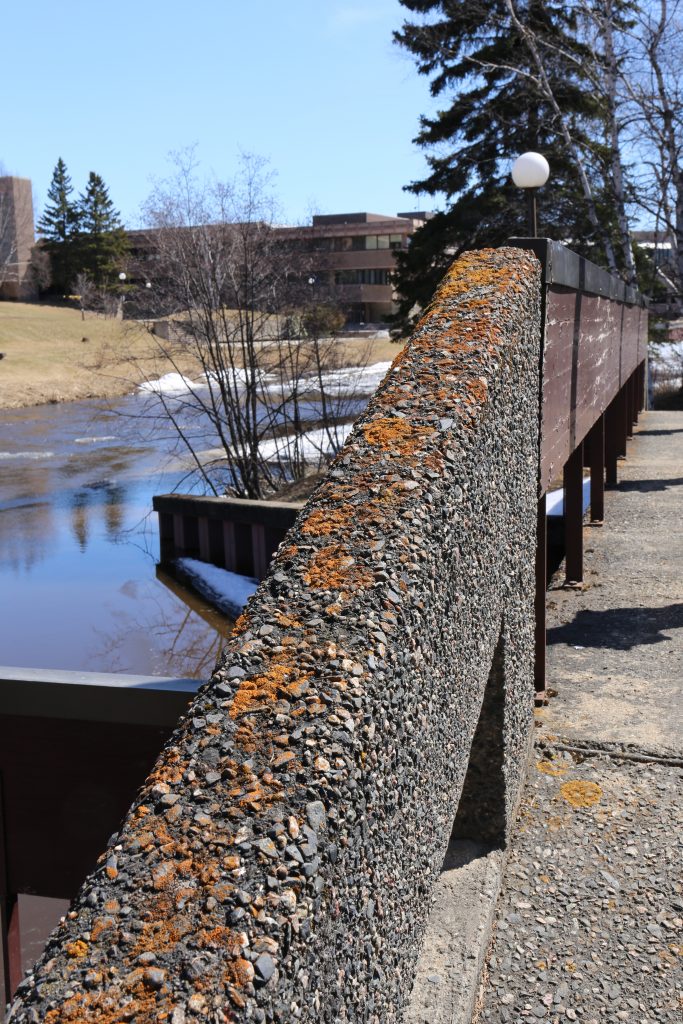

To get to Stop 6, turn left after crossing the spillway and follow the river channel to just past the open shaley area and turn to the right into the shady "bush".